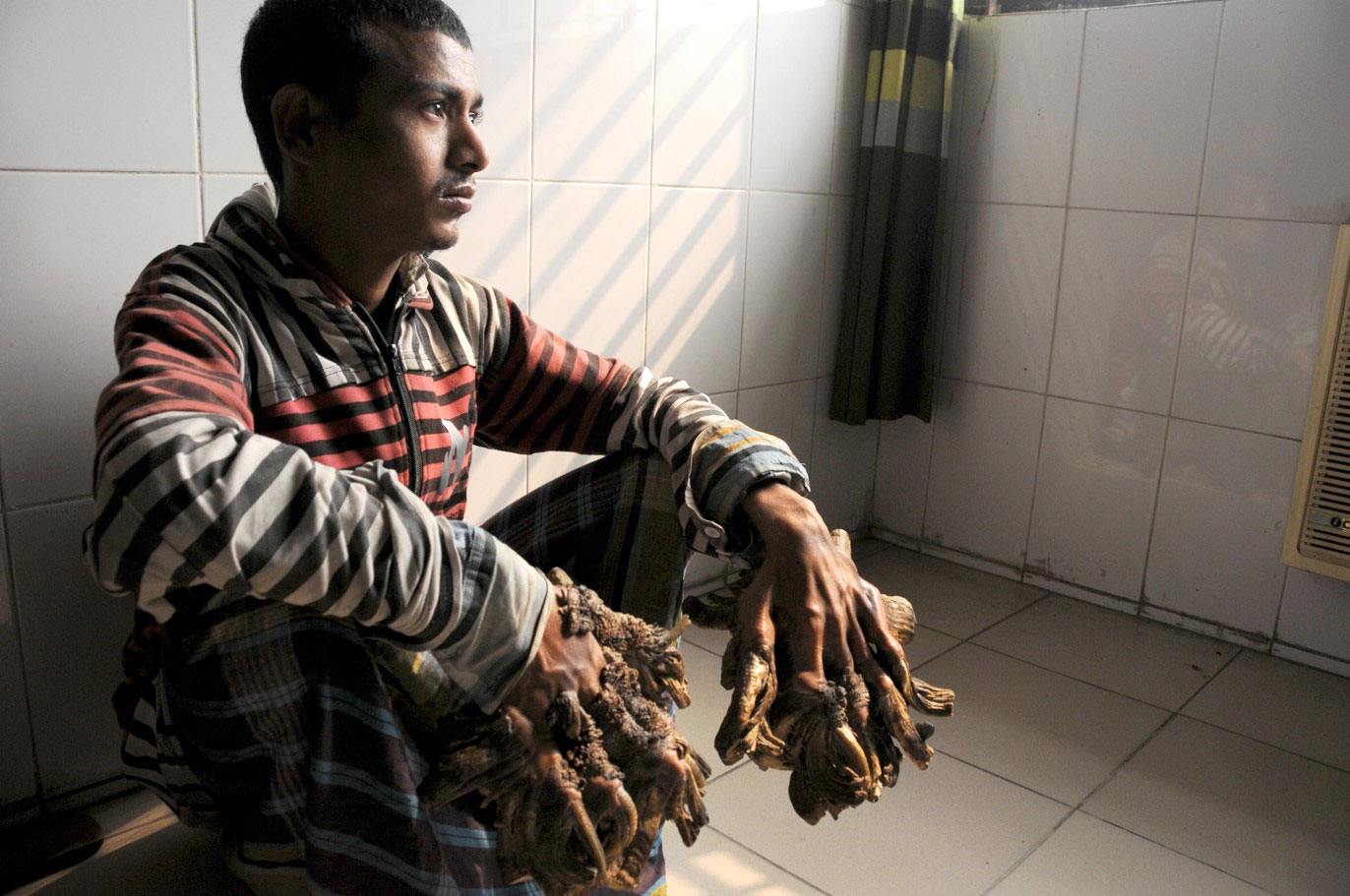'Tree Man' Has Surgery: What Causes This Rare Condition?

A 27-year-old man in Bangladesh known as the "tree man" recently underwent surgery to remove the extensive, wood-like warts that covered his hands and feet. But what causes this rare disease?
Over the past year, the man, Abul Bajandar, has undergone 16 surgeries to remove 11 lbs. (5 kilograms) of the unusual growths from his hands and feet, according toAgence France-Presse (AFP).
Prior to the surgery, the growths were so extensive that Bajandar could not feed himself or hold his daughter.
"Now I feel so much better; I can hold my daughter in my lap and play with her," Bajandar told AFP. [27 Oddest Medical Cases]
Bajandar has a rare genetic condition called epidermodysplasia verruciformis, according to news reports. People with this condition are more susceptible to human papillomavirus (HPV)infections in their skin, according to a 2010 report of the condition.
In people with this condition, HPV infections lead to the formation of wart-like skin lesions, which progress to malignant tumors in about 50 percent of patients, the report said. In people without this condition, infections with the same HPV strains may not cause any symptoms, according to Medscape.
People with epidermodysplasia verruciformis typically have mutations in two genes, called EVER1 and EVER2. It's not exactly clear how these gene mutations lead to the condition, but it's thought that these mutations make the body less able to ward off HPV infections.
Get the world’s most fascinating discoveries delivered straight to your inbox.
Bajandar's warts first appeared on his hands and feet when he was in his teens, and the growths began to multiply rapidly in his early 20s, according to The Washington Post.
In 2016, doctors at Dhaka Medical College and Hospital in Bangladesh performed the 16 surgeries, and Bajandar is expected to leave the hospital within the next 30 days, according to the AFP report.
It's not clear if Bajandar is cured of his condition; his warts could grow back, the AFP report said.
Currently, there is no definitive cure for epidermodysplasia verruciformis, according to the 2010 paper.
"Finding ways to address skin lesions in epidermodysplasia verruciformis patients is a constant struggle," the paper said.
In addition to surgery, treatment can include drugs called retinoids, which can curb cell growth and are sometimes used to treat skin conditions; and interferon, a protein produced by the body to fight viruses.
However, "though there are a plethora of [treatment] options, none seem to be curative, and lesions usually recur after treatment cessation," the paper said.
Original article on Live Science.

Rachael is a Live Science contributor, and was a former channel editor and senior writer for Live Science between 2010 and 2022. She has a master's degree in journalism from New York University's Science, Health and Environmental Reporting Program. She also holds a B.S. in molecular biology and an M.S. in biology from the University of California, San Diego. Her work has appeared in Scienceline, The Washington Post and Scientific American.
 Live Science Plus
Live Science Plus





